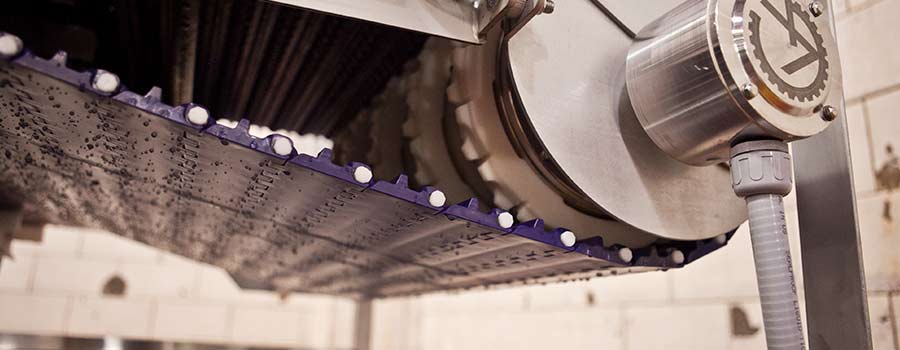
Sanitation improvements in conveyor system design
I have been working with foodprocessing plants for the better part of the last 30 years.
In today’s meat and poultry industry, the sanitary condition of the processing machinery is constantly under scrutiny in order to combat Listeria, E. coli and other types of bacteria that can penetrate the food chain.
In addition to food safety, worker safety is atop the list of primary concerns in plants. Improving workplace conditions by removing safety hazards is paramount to overall plant safety. In taking these steps, a plant can also advance its equipment safety and smart energy usage — two other areas of importance to operations.
With regard to these concerns, the typical conveyor ranks among the primary attention-getting pieces of equipment on the plant floor. Over the past 20 years, the conveyor belt industry has made substantial improvements addressing sanitation, safety and energy efficiency. Belt manufacturers developed modular style belts that allow high-pressure wash-down cleaning agents to flow through the modular belt, enabling the removal of protein byproducts trapped in the belt and conveyor crevices.
Another positive development has been the introduction of extruded conveyor belts. Extruded belts work very well in the food-processing plant environment, due to the high material density, which eliminates crevices that can promote the harboring of bacteria. Extruded belts are also easier to clean compared to modular style belts.
New conveyor drive designs have improved sanitation and workplace safety. Traditional designs use a motor and gearbox to transmit force through a chain, sprocket and shaft to the head pulley. This method is cumbersome, messy and unsafe. External rotating components on these drives require guards to ensure a safe working environment.
The new trend in conveyor drives features the gear reducer and electric motor as one assembly, mounted directly on the shaft of the head pulley.
Gaining in popularity has been the usage of drum motors and shaftmounted gear reducers. Neither of these designs require chain or sprocket assembly. The shaft-mounted drive is mounted directly to the head pulley shaft when the conveyor is using a standard flat belt. On the modular belt designs, the motor/gearbox concept drives a square shaft with sprockets mounted on it. The drum motor, being the head pulley, allows the belt to run directly on the outer drum while the gear reducer and the electric motor are housed within.
Drum motor designs can accommodate sprockets for driving modular style belts. The latest drum motor design, with all stainless steel continuous profile, can drive extruded or modular belts without the need of sprockets. Conveyor belts driven by sprockets take more time to be cleaned than a continuous profile, due to the space that exists between sprockets.
The trend for the past three years has been noticeably in the direction of drum motor design.
View original article